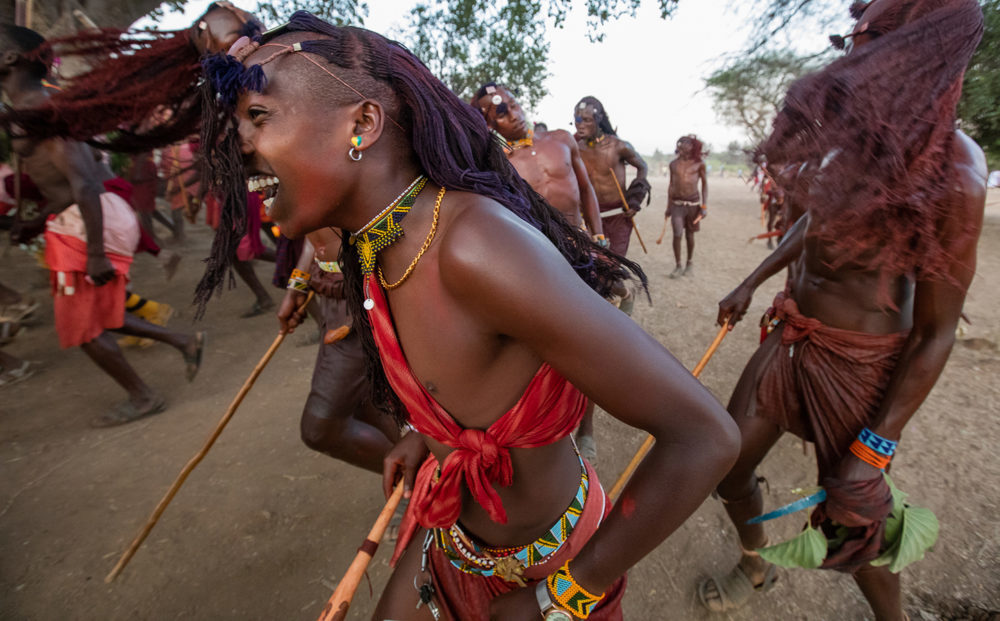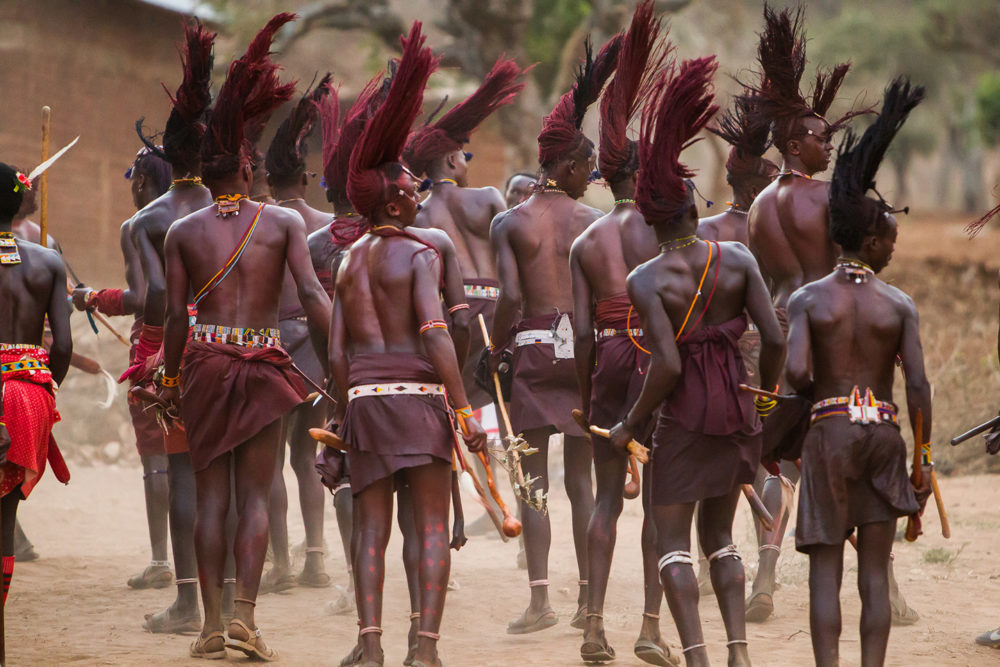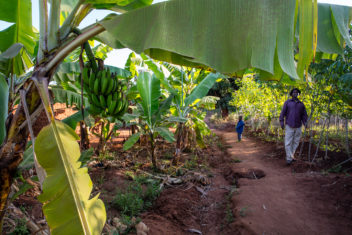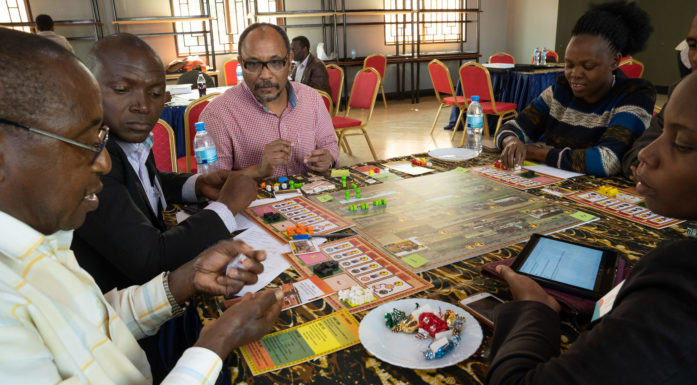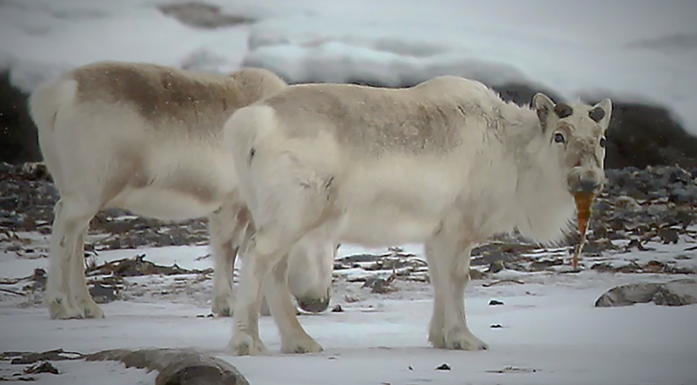The Maasai’s unknown cousins
They live side by side with the Maasai people and maintain a culture where rituals and music play an important role. The Sonjo people’s harvest ceremony is their most central ritual.
Many people know about the Maasai, the stately tribal people living in Kenya and Tanzania, who adorn themselves with elaborate bead jewellery and flaming red pieces of clothing, and who jump sky high in their ritual dances. But have you heard of the Sonjo people?
The tribal Sonjo people live in the same geographical area as the Maasai, outside the Serengeti National Park in the Ngorongoro district. The Sonjo constitute one of Tanzania’s 128 tribes and consist of about 20,000 individuals.
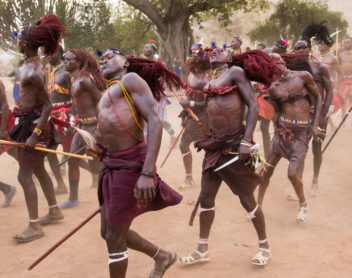
Dancing their way through the streets of the village, ceremonial dust swirls about and sticks to villagers’ sweaty bodies. Photo: Per Harald Olsen / NTNU
They maintain a traditional way of living, with the men tending the livestock and the women responsible for farming the land. Traditions are upheld and rites are passed on from generation to generation. Rituals are varied and numerous, including one for the transition from childhood to adulthood, plus ceremonies related to weddings, harvests, and rainy times, among others.
Like being in a fairytale
Photographer Per Harald Olsen from NTNU’s Department of Biology witnessed the harvest ceremony in Mbaribari.
“It was like stepping straight into a fairytale. The sounds and smells were very special, and friendly people showed off their proud traditions. I always try to capture the mood when I’m filming, and for a photographer it’s often a race against time. At the equator, the beautiful afternoon light is short-lived before it gets too dark to take pictures,” says Per Harald Olsen.
He took pictures of the ceremony until darkness fell.
“Then we thought it would be a good idea to head home, since the celebrating – combined with assorted drinks and plant intoxicants, knives and poison arrows going around – made us feel a bit uncertain in the dark,” he said.
Per Harald Olsen works as a photographer in the EU project AfricanBioServices. Nearly 100 researchers from Kenya, Tanzania, Denmark, Norway, the Netherlands, Germany and Scotland are involved in the research project, led by NTNU and Eivin Røskaft, NTNU Professor of Biology.
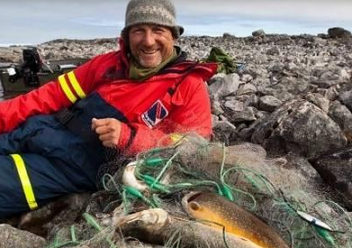
Per Harald Olsen works as a photographer for the EU project AfricanBioServices. Here he is, photographed in a quite different setting. Photo: NTNU
Research from AfricanBioServices projects will become more widely available with the publishing the book Northern Serengeti Road Ecology later this year. It contains many images from the area.
“The harvest ceremony is the biggest and most important ceremony we have,” says Elias Kalumbwa. He is Sonjo and lives in the Sonjo village of Samunge with 2000 inhabitants.
“Other important ceremonies are the rainmaking ceremony in April that ensures enough rain for crops in the fields. In June we celebrate a ceremony for young girls and boys, a thanksgiving to God,” Kalumbwa says by telephone from the Serengeti.
- You might also like: Serengeti Park disappearing
Choosing to continue the traditions
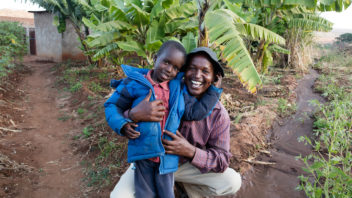
Elias Kalumbwa maintains a traditional Sonjo lifestyle by cultivating the soil. Photo: Per Harald Olsen / NTNU
Elias Kalumbwa is a farmer and grows bananas, papaya, cassava, sweet potatoes and mango. Additionally, corn and beans are grown in the region, which are the basis of the Sonjo diet. In addition to cultivating the soil, Kalumbwa has goats and some cows. The herd needs to be tended from the time the animals are released on pasture in the morning until darkness falls at six o’clock in the evening. The livestock spend the night in an enclosure within the village to protect against predators. The biggest threat at night is the howling of hungry hyenas.
Kalumbwa studied at the College of African Wildlife Management, Mweka, with support from NTNU. After completing his studies, he chose to move home to his village to live a traditional Sonjo lifestyle and help maintain the culture.
- You might also like: How can people and predators coexist?
Advanced irrigation system
The Maasai gave this group the name Sonjo, but group members call themselves Batemi. They originated in Central Africa, and are believed to have travelled southeast to the Serengeti area in several migrations over several thousand years.
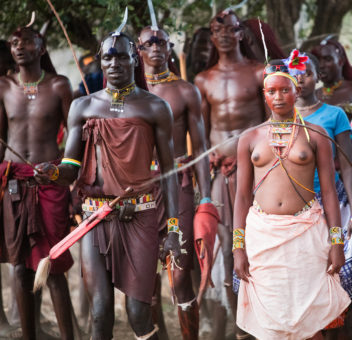
Both women and men perform ritual dances during the harvest ceremony. Photo: Per Harald Olsen / NTNU
One of the theories to explain the Sonjo migrations relates to conflict with the Maasai and that the Maasai drove them away. This would also explain the traditional barriers and fortifications that Sonjo built around their houses and villages. Today, the Maasai and the Sonjo live side by side in their own territories.
Another theory is that the Sonjo developed their agricultural lifestyle early on, which drove them towards greener pastures and areas with more water.
What is certain is that the Sonjo have developed an irrigation system to maximize their farming practices. The irrigation system is built with aqueducts and locks made of stone and hollow tree trunks to transport water from its source out to the cultivated fields.
- You might also like: Saving Africa’s wily wild dogs — with pee
Three farming methods
The Sonjo use three different methods to cultivate three types of land areas: the hura, magare and isirene.
HURA, the most important area that the Sonjo cultivate, is located in the flat river valley. Every year in the rainy season, the valley floods when the river overflows its banks. Once the water recedes, it leaves behind a thick, fertile layer of sediment on the river bottom that the Sonjo farm in the dry season. But the river becomes bone dry, so any crop cultivation depends on the irrigation system, which feeds water from permanent sources down to the valley floor.
MAGARE are agricultural areas located on the slopes rising up from the river valley. Here the soil does not receive any natural nutrient supply from river sediment, and the areas are very vulnerable to erosion.
The magare area is divided into two parts due to ecological constraints, which are cultivated every other year in order not to deplete the soil.
How much the Sonjo are able to grow here is entirely dependent on how much water is available in a given year. In bad years or when the rainy season shifts, these areas are not planted at all. However, enough food is usually is usually grown in the river basin (hura area) to avert hunger.
ISIRENE are areas located on natural terraces downstream from the river valley. Here the Sonjo have constructed an irrigation system to get water to all the terraces. However, when water shortages occur, the fertile river basin becomes the priority. Plants that require little water are favoured for the isirene areas, and they are usually planted early in the season.
African BioServices
- The Serengeti and the area around the national park are the subject of a major EU research project: AfricanBioServices
- Researchers from Kenya, Tanzania, Denmark, Norway, the Netherlands, Germany, and Scotland are involved.
- Norway and NTNU are leading the research project via NTNU’s Professor Eivin Røskaft.
- The researchers are studying three different drivers that are putting pressure on the Serengeti-Mara ecosystem:
- Climate changes
- Population growth
- Infrastructure
- You might also like: Serengeti road divides biologists
Music permeates Sonjo culture
Music and song play a prominent role in the Sonjo culture and way of life. Music is used for various ritual purposes like cleansing the community of evil spirits and invoking rain. Music is also an important part of healing ceremonies. Music that expresses pain is used during funerals both to comfort the mourners and to praise the dead.
Music and song are also used for happy occasions such as ceremonies to welcome back warriors from battles, for beer parties, wrestling matches and courtship. Work songs are used for construction, agricultural activities and other forms of communal work.
Source: “The Sonjo People of Tanganyika,” an anthropological study by Robert Gray.
You can hear singing and see a video from the harvesting ceremony below.











